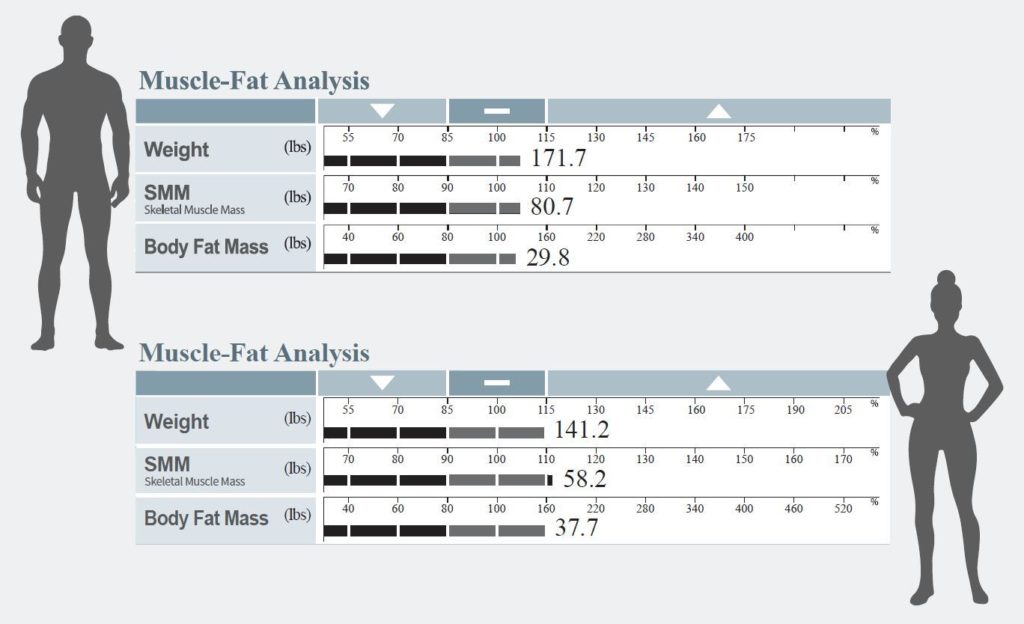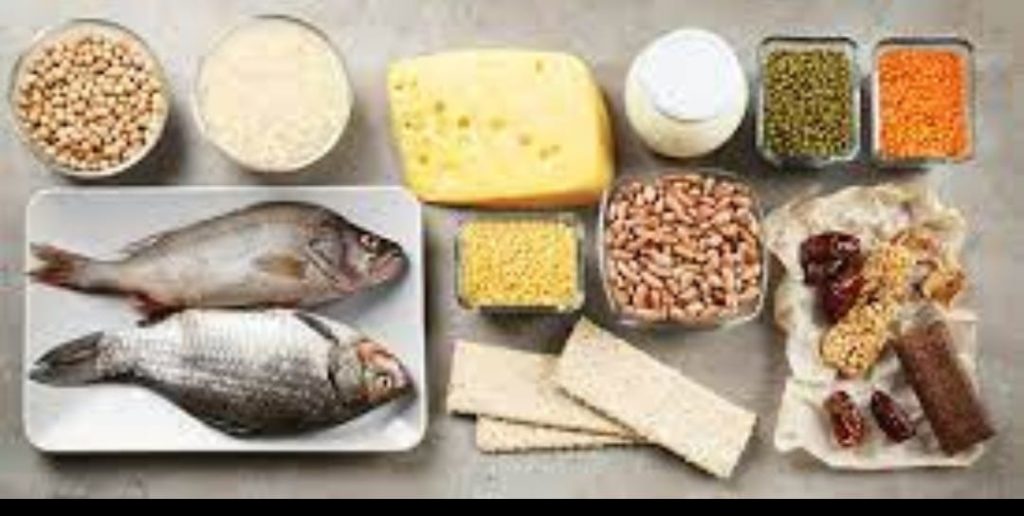What is muscle mass?

To manage your muscle mass and body fat percentage you first must understand your measurements. Often people mistake building muscle mass with burning body fat. These two often go hand in hand, but they are not the same.
Muscle mass includes the weight of the muscles in your body in kilograms or pounds. While the body fat percentage measures the amount of fat your body holds. Burning body fat can be a result of the accumulated muscles. Muscles are like engines when it comes to consuming energy. Our muscle mass plays a crucial role when it comes to fitness. When your body builds muscles, it burns energy and fat all the time.
As your muscle mass increases, the faster your body can burn calories/energy. This leads to an increase of your basal metabolic rate (BMR), which helps in losing weight. Muscle mass includes smooth muscles, skeletal muscles and water contained in the muscles. Where the skeletal muscles are the most visible when there is no fat layer. Muscles consist of water and protein. Therefore, it’s important to include protein in your adjusted eating schedule.
Who should gain muscle mass?
Below categories should opt for muscle building activity
- Senior citizens with osteoporosis/osteoarthritis
- Athletes
- Sports players
- Those who are underweight
- Diabetics
- Peri menopausal women between ages of 40 and 50
- Anyone who wants to gain strength
How to gain muscle mass?
There is a difference between gaining muscle mass for men and women. Men have a higher muscle production than women; often this is used as an excuse when it comes to growing muscle mass. This does not mean that women cannot gain muscle mass. In fact, women can experience big gains in power and muscle mass as well and they should train their muscles the same way as men do. Building muscle happens in the gym, but also in the kitchen Building muscle mass is not only about going to the gym and lifting, you can also build cycling by other types of workouts, such as cycling

EAT EVERY THREE HOURS
Eating the right thing at the right time is crucial for helping you boost your muscle mass. The easiest way is to eat your breakfast, lunch and dinner as usual, interspersed with meals post workout, pre-bed and with two snacks in between. By keeping your food intake up, it will mean you won’t be as hungry, because eating smaller meals more often versus a few big meals will decrease your stomach size.
EAT PROTEIN WITH EACH MEAL TO BOOST YOUR MUSCLE MASS

You need protein to build and maintain muscle. To achieve this, you should be looking to eat at least 1g per kg of body weight. But that’s only while heavy weight training routine.
The easiest way to get this amount is to eat a whole protein source with each meal. These include:
• Red meat. Beef, pork, lamb, etc.
• Poultry. Chicken, turkey, duck, etc.
• Fish. Tuna, salmon, sardines, mackerel, etc.
• Eggs. Don’t believe the cholesterol myths. Eat the yolk.
• Dairy. Milk, cheese, cottage cheese, quark, yogurt, etc.
• Whey. Not necessary but great for easy post workout shakes.
• Try vegan options too, such as lentils, tofu, seeds and nuts.
EAT FRUIT AND VEGETABLES WITH EACH MEAL
Most of them (not all) are low calorie: you can eat your stomach full without gaining fat or weight. Fruit and vegetables are also full of vitamins, minerals, antioxidants and fiber which helps digestion, but just be careful to check the sugar content of some fruits.
EAT CARBS ONLY AFTER YOUR WORKOUT
While you need carbs for energy, most people eat more than they need. Limit your carbohydrate intake to after your workout only.
• Eat fruit and vegetables with all meals. These contain few carbohydrates compared to whole grains with the exception of corn, carrots and raisins.
• Another Carbs Post Workout Only. This is rice, pasta, bread, potatoes, quinoa, oats, etc. Avoid white carbs and eat whole grain.
EAT HEALTHY FATS
Healthy fats improve fat loss and health as they digest slowly. Make sure you balance your fat intake, eat healthy fats with every meal and avoid artificial trans-fats and margarine.
DRINK WATER TO HELP YOU BUILD MUSCLE MASS
Strength training causes water loss through sweating which can impair muscle recovery and thus, it won’t help you increase your muscle mass. Drinking water prevents dehydration but also hunger since an empty stomach can make you think you’re hungry.
EAT WHOLE FOODS 90% OF THE TIME

To really get the results you want and to boost your muscle mass significantly, 90% of your food intake should consist of whole foods.
• Whole foods. These are unprocessed and unrefined (or little refined) foods that come as close as possible to their natural state. Examples: fresh meat, fish, poultry, eggs, vegetables, pulses, fruits, rice, oats, quinoa etc.
• Processed foods Usually contain added sugars, trans-fats, nitrates, corn syrup, sodium and more chemicals. Examples: bagels, fruit bars, cereals, pizza, cookies, sausages, frozen meals, supplements
WHAT ACTIVITIES NEEDED FOR MUSCLE MASS GAIN-
Weight training (Machine based/ free weights): Muscles grow with weightlifting as it’s a resistance form of exercise. Weight training helps muscles to stretch, tear and repair which in turn leads to growth of muscle mass and strength.
Don’ts of weight training-

Follow these tips to avoid common mistakes when you’re weight training:
- Don’t skip the warmup. Cold muscles are more prone to injury than are warm muscles. Before you lift weights, warm up with five to 10 minutes of brisk walking or other aerobic activity.
- Don’t rush. Move the weight in an unhurried, controlled fashion. Taking it slow helps you isolate the muscles you want to work and keeps you from relying on momentum to lift the weight. Rest for about one minute between each exercise.
- Don’t overdo. For most people, completing one set of exercises to the point of fatigue is usually enough. Additional sets may take up extra time and contribute to overload injury. However, the number of sets that you perform may differ depending on your fitness goals.
- Don’t ignore pain. If an exercise causes pain, stop. Try the exercise again in a few days or try it with less weight.
- Don’t forget your shoes. Shoes that protect your feet and provide good traction can keep you from slipping or injuring your feet while you’re lifting weights.
Running: While running, your muscles lengthen and contract. Running uphill, inclined against the gravity, creates a resistance and helps in muscle building. And it gives you the athletic body.
Swimming: When swimming, you are constantly pushing and pulling against the resistance of the water involving a large number of muscle groups across your body. This ultimately creates the necessary environment for effectively building muscle.
CAUTIONS
- If you haven’t slept enough or not feeling well, do not attempt any exercise the next day
- Do not try crash or drastic diets for muscle building
- Make sure all the activities are done under professional supervision
- Get appropriate rest in between exercises
Incase if you want to loose weight – then you should come closer to Ideal Weight and then start the muscle mass gain so that you can maintain good health and weight too.
To get a personalized plan or dietary guidelines for your health problems you can contact directly, the Contact details mentioned below, Happy to help always.
